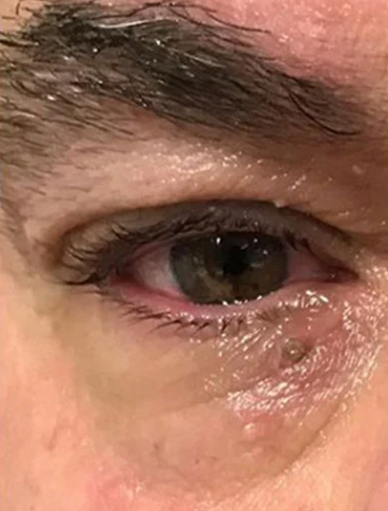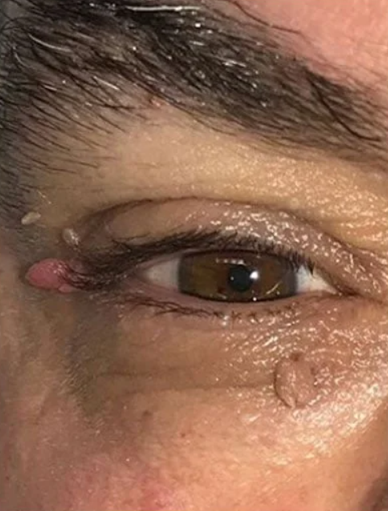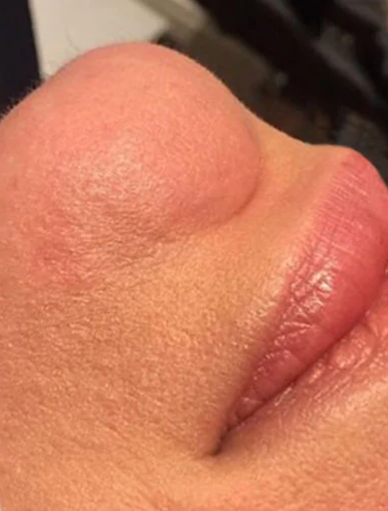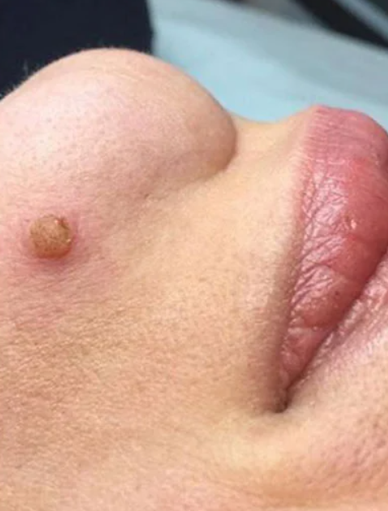Introduction
Hair that grows on your mole is usually harmless. It shows that the follicles under your skin are healthy. You need to visit your dermatologist if you notice any instant changes in your mole’s shape, size, colour, or texture, because it might be a sign of a serious condition.
Learn to know what the differences are between harmless moles and ingrown hair, and when you need to see a dermatologist, plus an available option of hair removal in the UK.
What are Moles?
Moles, also known medically as naevi, are small clumps of cells producing pigment called melanocytes. It commonly grows on the skin on different parts of the body with different shapes, colours, and textures that can be flat or raised in some ways. Some people acquire it over the years, while others have it at birth.
When melanocytes fail to spread evenly on our body, they will grow together and form a mole. Most of them are not cancerous and retain their looks throughout life. But some types change over time, which would likely need a doctor’s assessment because it might be a sign of serious conditions.
Different Types of Moles
- Congenital Moles: These are present at birth and often larger and come with rough hair.
- Acquired Moles: Usually smaller and of even colour that usually appear later in life.
- Atypical Moles (Dysplastic Naevi): Shape and colour are irregular; should be monitored closely.
- Spitz Moles: Mistaken for melanoma because of their pinkish and raised appearance.
To know exactly the types of your moles and to properly assess their condition, consult your doctor.
Why Hair Grows in Moles?
A sprouting hair from a mole is a sign that your skin health is normal, even though it is not a usual thing. Hair grows from hair follicles (a tiny sac under your skin); follicles may form inside a mole.
A hairy mole appears when the hair grows out and passes through the darker area of the mole. This is not a sign that it is cancerous; it happens naturally to every individual. Follicles that are active and healthy on moles can grow hair, which is believed to be non-cancerous.
Hair Follicles in Moles: The Science Behind It
A mole doesn’t block the function of follicles. Because it continues to receive some nutrients from the small blood vessels, the growth may continue. The hair will eventually pass through the mole, because the mole is pigmented cells, which will make the hair look darker and thicker.
These hairs are really harmless. But some individuals may feel conscious if it is located on their face or neck, and even on their arms or some of the visible parts of their body.
It can be removed easily these days. Go to your doctor for proper removal.
Is it Dangerous to Have Hairy Moles?
No, in most cases. Growing hair is a sign that the moles are still receiving a good supply of blood and that the structure of the cells has not yet turned into a cancerous one.
But you should always check your moles for any sudden changes, such as:
- Rapid increase in size
- Patchy colours or uneven borders
- Bleeding, itching, or crusting
- Loss of hair where it usually grows
Spotting an Ingrown Hair in a Mole
An ingrown hair may occur when the hair does not grow through the surface but curls back into the skin. Because of that, a red bump that’s raised on the skin develops with itching or mild tenderness. You can see that the hair is trapped under your skin.
If you regularly wax or shape your unwanted hair, there’s a possibility that ingrown hair develops, which usually goes away on its own. It can be removed naturally with the help of a warm compress or by exfoliating it.
Mole vs. Ingrown Hair
It can be distinguished by checking the following signs.
| Feature | Ingrown Hair | Mole |
| Colour | Red or skin-toned | Tan, brown, black |
| Texture | Inflamed, tender | Smooth or raised slightly |
| Duration | Heals in a few days | Permanent |
| Hair Visibility | Trapped hair under the skin | Hair may grow through a mole |
| Pain/Itching | Sometimes | Usually painless |
Avoid picking or squeezing the spot if you are not sure whether it is a mole or just an irritation. Book a consultation with your doctor to check and confirm the diagnosis with the use of a dermatoscope.
Hair Removal Safety Options
Some individuals are tempted to pluck and shave the growing hair from their mole at home. But it is not advisable. Doing it can irritate the skin and may become infected. There are safer alternatives that are available to help you remove them.
- Laser Hair Removal: The treatment is used to target the follicles under your mole, making sure that the surrounding tissues will not be damaged.
- Electrolysis: It delivers an electric current to destroy your moles using a fine needle.
- Surgical Excision: If you want to cosmetically remove the unwanted mole because it’s too bothersome for you, the entire lesion can be excised under local anaesthesia.
When Should a Mole Be Removed
Mole does not cause any harm. Almost all people have them, which might be at birth or develop later in their life they develop. Some are completely fine to have them, while others are bothered and want them to be removed.
It may be advised to remove a mole if:
- The moles are irritated when you shave or wear clothing.
- It’s painful or bleeding.
- Affect your confidence due to cosmetic reasons.
- Your dermatologist sees an abnormality.
Once your mole has been removed, the tissue will be sent for histopathology testing to check if it’s malignant.
Effective & professional doctor-led Moles and Hair at our central London clinic
Verified Before & After
Verified Before & After
The NHS vs. Private Dermatology
In the UK, a mole can only be removed via the NHS if it’s needed medically. If your doctor suspected it was melanoma, or if unsure what it really is. They will remove it to go through the examination process. If you want your mole removed because of cosmetic reasons, the NHS will not cover the fee for you.
In private clinics, both medical and cosmetic reasons can be served. Whether it’s mole removal or assessment, until the last steps of post-treatment care. The thing is, you have to pay out of your own pocket. It also provides reassurance of clinical oversight and sterility because a registered dermatology clinic has the same safety standards following the regulated environments of the NHS.
When to Visit a Dermatologist
A key to treating melanoma is early detection. You can do it at home once a month by doing a self-check, and look if there’s a new mole and examine if there’s anything unusual on the existing mole.
Those who are at risk of developing skin cancer should go to a dermatologist for regular checkups. This can be helpful to detect it as early as possible for proper medication.
Malignancy Warning Signs
- The shape and colour of your mole are changing suddenly.
- It has irregular borders, and enlargement is rapid.
- There’s new crusting.
- It bleeds
- Discomfort and itching come persistently.
- At the age of 30, a new mole appears.
As always, prevention is better than a cure. So if you notice and experience any signs above, don’t hesitate to let your doctor know to help you with what to do next.
The ABCDE Rule
To help you identify clearly the signs of melanoma, use the ABCDE checklist.
- A- Asymmetry: The sides of your mole are different from one another.
- B- Border: It comes with jagged edges, blurred, and irregular in shape. Good moles have to be smooth.
- C- Colour: Colours are uneven and look different.
- D- Diameter: Larger than 6mm
- E- Evolving: There are visible changes in its appearance (size, shape, colour, or texture.
You need to schedule a mole mapping or a skin cancer screening if you have those signs.
FAQS
- Is it dangerous when the hair grows from a mole?
It is not dangerous if there’s a growing hair in your mole. Instead, it’s showing that your hair follicles are active and healthy, which is a good sign, of course. Changing the appearance of its size, shape, or colour means a lot, and that’s the time you should be worried.
- Can I safely pluck the hair on my mole?
We know that shaving or plucking the hair on your own at home can be tempting. But it’s not really advisable because it may cause irritation and infection. Doing so needs proper care and guidance; the best is to consult your doctor and go for safer alternatives.
- Why does thick, dark hair grow in some moles?
An increased pigment in your mole makes the hair look darker and coarser than that of others in the surrounding vicinity.
- What’s the difference between an ingrown hair to a mole?
Moles are made of pigment cells that cluster as they fail to spread evenly and will remain long-term on your skin, while ingrown hair is a trapped hair that becomes irritated and goes away on its own.
- When should I consult a dermatologist about my hairy mole?
The ABCDE rule is an effective way to check the condition of your mole. If you notice that you have any signs from the given checklist, you have to see your doctor right away, as screening is very important at this time.
Conclusion with Healthy Tips for the Skin
There’s nothing to worry about if you have a hairy mole. It’s just a clustered pigment that groups in one place, staying above your healthy follicles and doesn’t give any harmful effects on you. What you have to do is monitor the changes that may happen. Because a benign mole should stay consistent in its look.
Keep your skin healthy by doing the following:
- Do your monthly self-checks
- Use sunscreen (SPF 30) daily.
- Do not scratch, pluck, or pick your moles.
- Book mole mapping annually for early detection.
It will help you to have peace of mind if you let your doctor check your new or changing moles, or even the ones that give you self-consciousness.
Reserve a hair appointment
One of our experts will be more than happy to answer any questions you have.
Book AppointmentDr Hasib Ur-Rub
★★★★★
The best
22nd November 2025
Sophia Waterman
★★★★★
Really professional, caring , knowledgeable and nice manner. Always a pleasure
3rd December 2025
Emma Ashwood
★★★★★
Very informative.
21st November 2025










